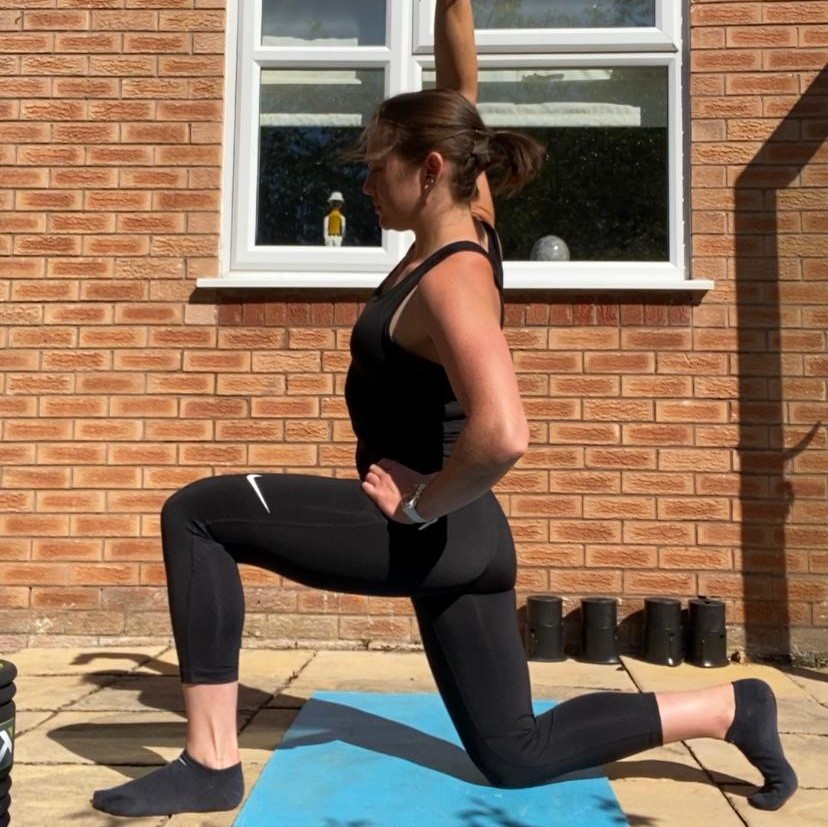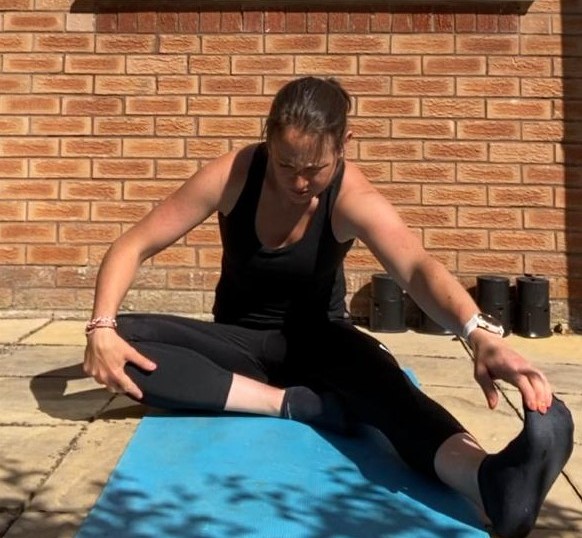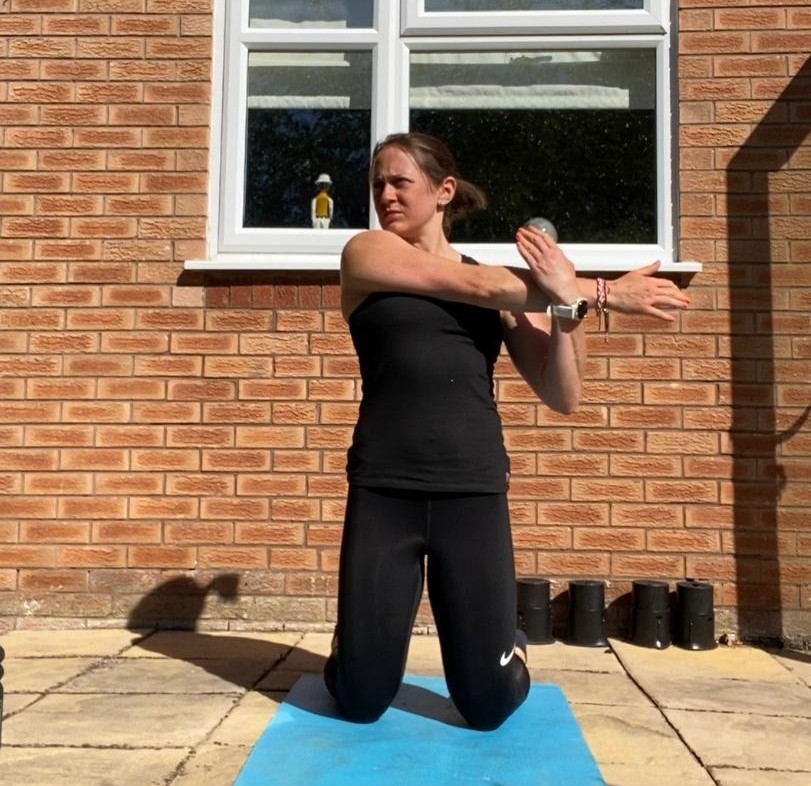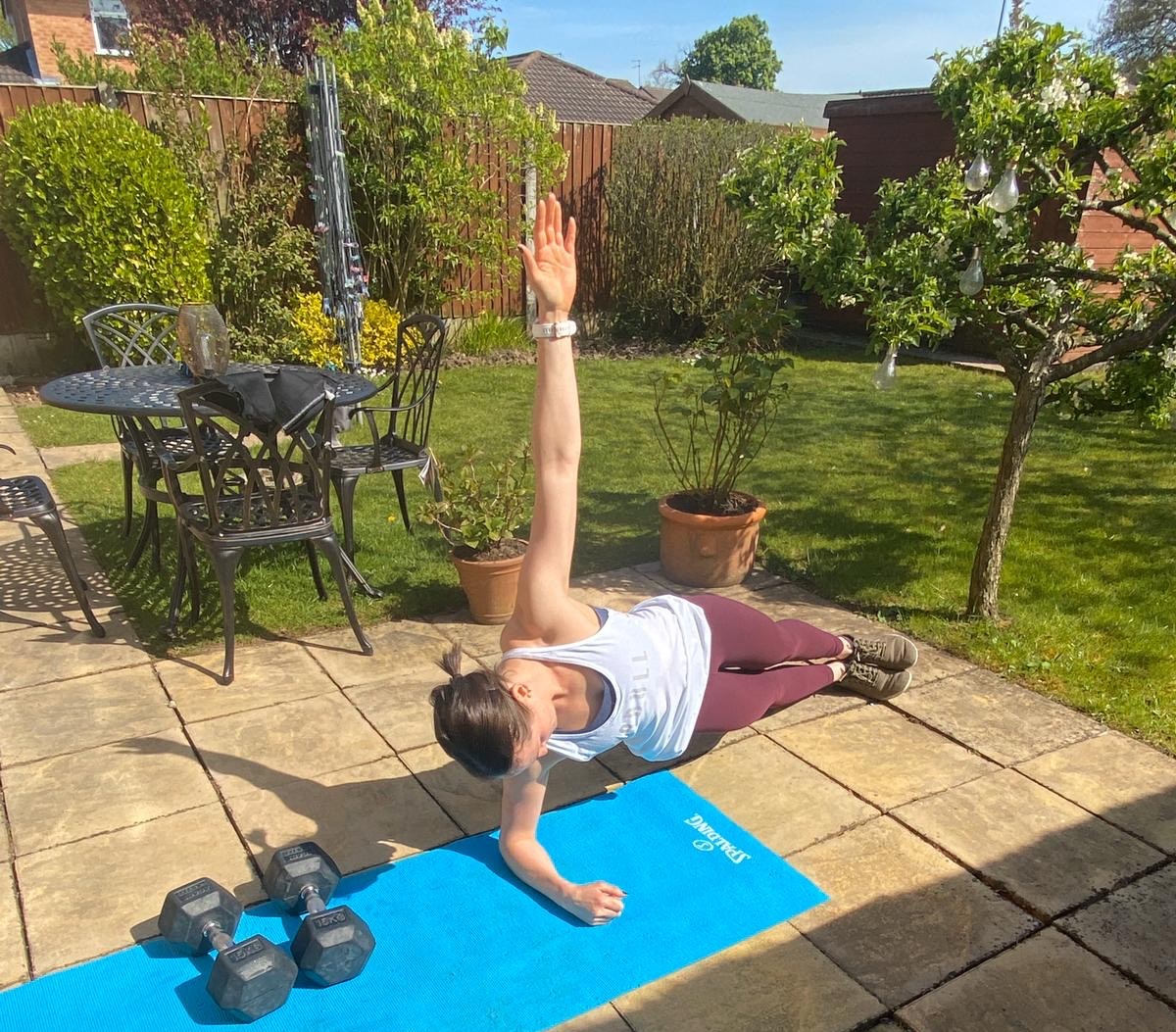If, like many of us, you’re using lockdown as a means to get into shape, you should be mindful that no workout is complete without a warm up!
When we warm-up, we are preparing our body for exercise by gradually increasing both our heart rate and circulation, which loosens our joints and increases blood flow to our muscles. This, combined with stretching, prepares our muscles for physical activity and prevents injuries.
Josie Penfold provides provides a list of stretches and warm up exercises for you to try at home or in an outdoor, safe, environment. However, it is important to remember that this is a guide and you should tailor these movements to your own experience and ability.
Stretch It Out
Ideally, you want to be stretching for a minimum of five minutes per day. However, this is subject to change depending on your activity, i.e. higher-intensity workouts may call for longer periods of stretching; conversely, lower-intensity workouts may require a shorter timeframe. Below I’ve listed some great stretches to start you off, which include both static and dynamic movements. Each stretch can be repeated 2-3 times as you see fit. The time to hold each stretch is a guide – you can increase or decrease this time as appropriate.
- The Hip-Flexor
The hip-flexors, along with the core, torso and glutes, stabilise the pelvis and spine which allows us to move and exercise without injuring our lower backs. We use our hip-flexors when we perform explosive movements, such as running, jumping and squatting. Tight hip-flexors are one of the most common causes of postural problems and preventable injuries. By regularly stretching and strengthening these muscles, we reduce the risk of injury to our knees and back, improve posture and relieve back soreness.
How to:
- Adopt a wide stance lunge position, placing your back knee on the floor.
- Keeping your back straight, push your hips forward – you should feel a pull at your hips and quads.
- Hold for 30 seconds and then switch to the other leg.

- The Hamstring Stretch
Stretching the hamstrings prevents the muscle tightening, which can have adverse effects on your lower back and pelvis.
How to:
- Sit on the floor with your legs straight out in front of you.
- Bend at the waist to reach forward as far as you can to touch your toes.*
- Hold for 15-30 seconds and then take a deep breath to deepen the stretch for a further 20 seconds.
*Note: You may find you can’t reach very far to begin with, but regularly stretching will improve your ability; after all, practice makes perfect!

- The Cobra Stretch
The Cobra stretch is a great upper body and torso stretch that reduces stiffness in the lower back and improves flexibility.
How to:
- Lie on your front and place your hands flat underneath your shoulders.
- Tuck your elbows in by your sides and raise your head and chest, keeping your hips and groin on the floor.
- Hold for 15-20 seconds and then gently lower yourself back down.
- Upper Back Stretch
Quite simply, stretch to strengthen your back and reduce injury, aches and pains.
How to:
- Stand with feet shoulder-width apart, and interlock your fingers.
- Place your arms in front of you without bending your elbows.*
- Bend your middle back slightly, and push forwards.
- Hold for 15-20 seconds.
*Note: You can also do the same movement by placing your hands above your head.
- Knees-to-Chest
This will stretch your hips and lower back, while relieving pressure on your back nerves.
How to:
- Lie on your back and bring either one or both knee(s) to your chest (depending on what feels most comfortable), holding it there with your arms.
- Hold for 20-30 seconds.
- Cross-Body Shoulder Stretch
By stretching our shoulders, we can relieve muscle tension and pain in our shoulders and neck.
How to:
- Place one arm across your body and hold with the opposing arm, pulling it across the body gently until you feel a stretch in your shoulder.
- Hold for 15-30 seconds, and then repeat on the other side.

- Quad Stretch
This is an important one before lower body exercises, such as squatting or lunging.
How to:
- Stand with feet hip-width apart.
- Bend your knee and reach to hold your ankle with the arm from the same side to assist with the bend and the stretch.*
- Keep thighs in line with each other.
- Hold for 20-30 seconds – you should feel a gentle stretch in your thighs.
*Note: You can hold a chair/table with the opposing hand to assist with balance.
- Leg Swings
This is a dynamic stretch which warms up our joints and muscles while preventing injuries; particularly reducing stress on the hips.
How to:
- Swing one leg forward and backwards for 20-30 seconds or 10-20 swings per leg.*
- Switch to the other leg and repeat.
- Swing one leg out to the side and back inside for 20-30 seconds or 10-20 swings per leg.*
- Switch to the other leg and repeat.
*Note: You can hold a chair/table for balance if you need to.
- Calf Raises
Calf raises strengthen the calves which help with lower body movements and assist with foot plantation, elevation and balance.
How to:
- Stand on the edge of a platform (this could be a book, or a small stack of magazines), hold onto the side of a table/chair for support and raise yourself up onto your toes.
- Hold for two-three seconds and then slowly lower yourself back down.
- Complete 10-12 reps per leg.
Warm Up/Gentle Exercises
The below exercises could be used to warm up before a high-intensity workout, such as a run, or they could be a workout themselves. These exercises can be repeated two-three times, as you feel fit. It is important to listen to your body throughout your workout; if you need a rest, take one, and if things start to hurt, stop doing what you’re doing until you seek professional guidance.
Arm Circles
An easy one to get you started!
How to:
- Place arms out to the side and rotate your arms first clockwise for 30 seconds and then anti-clockwise for a further 30 seconds.
Walking lunges are an excellent exercise to help strengthen our lower body muscles, promote hip stability, and improve athletic performance.
How to:
- As you take a step, bend your knees gradually, dropping into a lunge position.
- Keep your back in a neutral position and keep your knees in line with your toes.
- Once your hips are lower than your upright knee, gradually push to an upright, neutral position, feet together.
- Repeat on opposing leg.
- Walk 20-50m length.
The squat is a fantastic compound exercise which uses almost every muscle in our lower body. It not only burns fat but also builds muscle, strengthening our bones and muscles – including our hips and knees, while increasing flexibility. This then reduces our chance of injury in our everyday activities (just think about how much you bend up and down on a daily basis!).
How to:
- Stand with your feet shoulder-width apart (you can hold a wider stance if this feels more comfortable).
- Point your toes outward slightly – increasing the degree to which they point out if your stance becomes wider.
- Focus on a spot in front of you and maintain looking at this spot for the whole movement.
- Place your hands in front of your chest or stretch them out in front of you, keeping your chest up and spine in a neutral position (that is, avoid curling your back forwards or bending it backwards).
- Place the weight on the balls of your feet and your heels.
- Tightening your core, bend your knees and push your hips and bum backwards as your knees bend.
- Keep your feet in line with your feet, ensuring they do not bend inwards or go over your toes.
- Once your hips are lower than your knees, push off from your heels and drive your knees out as you push to stand up.
- Complete 8-10 reps.
6. Jumping Jacks
Jumping Jacks are part of plyometrics training, or ‘jumping training’, which means they combine jumping with resistance, improving our cardio and strength and allowing your body to burn some serious calories. However, they are a higher-intensity workout than what we’ve discussed so far. Therefore, if you’re a beginner, be sure to stretch and complete some squats/lunges first to warm up your lower body. They can also prepare your body for more intense movements, such as burpees, box jumps or jumping lunges.
How to:
- Stand upright with your arms at your sides and legs together.
- Bend your knees slightly and jump in the air, spreading your legs shoulder-width apart and stretching your arms out over your head.
- Jump back to starting position.
- You can start with 30 seconds on 30 seconds off for 5-10 minutes (increasing active/rest time as required).
- 200m Jog/Walk
A light, short jog or walk will increase blood flow which, in turn, will assist with warming up our muscles and preparing them to move, while also increasing our lung capacity and raising our heart rate. Complete a jog/walk around the garden/house two-three times before you start your workout.
As mentioned, it is important to listen to your body when performing any of the above exercises or any other exercise at home. If you start to feel any pain, stop what you’re doing. If you require a rest, have a rest. Our bodies have a fantastic capacity and ability, but we must be mindful not to over exert ourselves and cause unnecessary injury.
Feature photograph by Lindsey Saenz. Remaining photographs provided by Josie Penfold.



